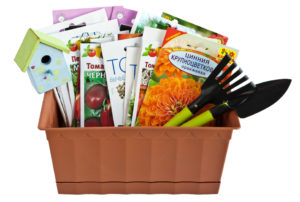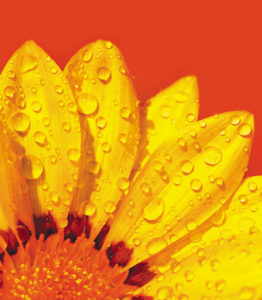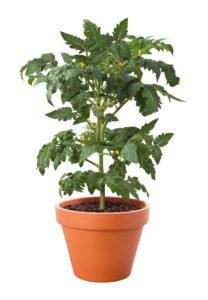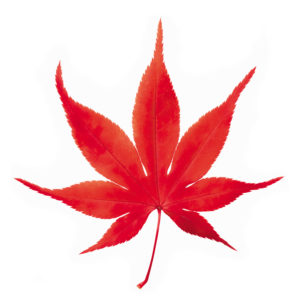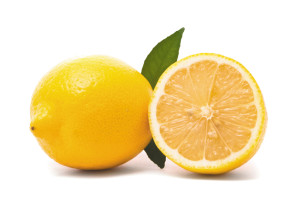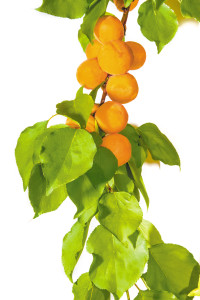Q. I’ve been told that the sweetest bell peppers are those with four bumps on the bottom as they are the females. The “male” pepper has only three bumps. Is this factual? In addition, my red, mini bell peppers are now starting to turn a marbling color. They’re a combination of red, orange, and green colors and then start to shrivel up. Are they lacking something or just very confused?
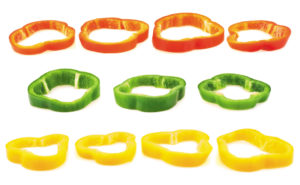 A. The number of bumps or lobes on a pepper is not an indicator of sweetness, nor the sex of a fruit. Peppers have both male and female reproductive structures in the same flower. They do not produce separate male and female fruits. The male flower is sterile. It’s the female that produces the fruit although some male flowers on a papaya have been known to set fruit. Genetics determines the number of lobes on a pepper. The four lobed ‘bell’ pepper is the most popular in the USA, so plants have been bred for this characteristic. Sweetness is another genetic characteristic. The sweetness in all sweet peppers increases as they mature. They start out green and change color as they ripen. The color depends on the specific variety; the most common variety is red when ripe. Red, yellow or orange sweet bell peppers start out green and turn red, yellow or orange when ripe. What can be confusing, is that there is also a variety that is green when ripe. Peppers shrivel up when they are over ripe and on the decline. So they need to be picked before this occurs. The green bell peppers you find at the store are usually an unripe green sweet bell pepper or it could be an unripe red. They will not be any of the other color varieties in the green stage because the other colors can be sold at a much higher price, so they are always allowed to ripen before being sold. The additional time it takes to ripen and change color accounts for the reason they are more expensive. Overall, you’re waiting too long to harvest the peppers, so pick them before they start to shrivel.
A. The number of bumps or lobes on a pepper is not an indicator of sweetness, nor the sex of a fruit. Peppers have both male and female reproductive structures in the same flower. They do not produce separate male and female fruits. The male flower is sterile. It’s the female that produces the fruit although some male flowers on a papaya have been known to set fruit. Genetics determines the number of lobes on a pepper. The four lobed ‘bell’ pepper is the most popular in the USA, so plants have been bred for this characteristic. Sweetness is another genetic characteristic. The sweetness in all sweet peppers increases as they mature. They start out green and change color as they ripen. The color depends on the specific variety; the most common variety is red when ripe. Red, yellow or orange sweet bell peppers start out green and turn red, yellow or orange when ripe. What can be confusing, is that there is also a variety that is green when ripe. Peppers shrivel up when they are over ripe and on the decline. So they need to be picked before this occurs. The green bell peppers you find at the store are usually an unripe green sweet bell pepper or it could be an unripe red. They will not be any of the other color varieties in the green stage because the other colors can be sold at a much higher price, so they are always allowed to ripen before being sold. The additional time it takes to ripen and change color accounts for the reason they are more expensive. Overall, you’re waiting too long to harvest the peppers, so pick them before they start to shrivel.
Q. My tulip bulbs have arrived from Holland. I’m planning on planting them in containers to give as Christmas gifts. What do I need to know about the soil preparation and/or potting these bulbs?
 A. Tulip bulbs should be chilled for four to six weeks prior to planting unless the bulbs were pre-chilled before shipping; otherwise, the flower stems will be very short. Tulip bulbs are cooled by placing them in the vegetable bin of a refrigerator. You should remove any fruit including tomatoes as they release a naturally occurring gas called Ethylene that can damage the immature flower(s). In mid to late November, plant the bulbs in the containers using any of the commercially available potting soil. The planting depth will depend on the size of the container. The bulbs should be at the soil surface with any six inch or smaller container to allow room for the roots. With larger containers, you can move the bulbs down half way in the pots. A tablespoon of bulb food is place under the bulbs with a layer of soil between the fertilizer and the bulb. You now have two options as far as spacing the bulbs. They can be evenly spaced or placed next to each other. I prefer the later when using them as a gift or when planted in containers for color on decks and patios. By Christmas, it is very doubtful that the bulbs would have started growing. The addition of seasonal color will bridge the gap. Violas, Pansies and Alyssum can be planted in between the bulbs after you added more soil but be sure to leave sufficient room to water. I’d use straws to mark the gaps. The tulips will have no problem emerging through the roots and foliage. The finished containers are placed outdoors in a protected area and watered every two weeks. I would not put the finishing decorations on until the last minute. Beside the traditional items, you could use Pyracantha or Toyon berries along with some bark or decorative rock to make them festive looking.
A. Tulip bulbs should be chilled for four to six weeks prior to planting unless the bulbs were pre-chilled before shipping; otherwise, the flower stems will be very short. Tulip bulbs are cooled by placing them in the vegetable bin of a refrigerator. You should remove any fruit including tomatoes as they release a naturally occurring gas called Ethylene that can damage the immature flower(s). In mid to late November, plant the bulbs in the containers using any of the commercially available potting soil. The planting depth will depend on the size of the container. The bulbs should be at the soil surface with any six inch or smaller container to allow room for the roots. With larger containers, you can move the bulbs down half way in the pots. A tablespoon of bulb food is place under the bulbs with a layer of soil between the fertilizer and the bulb. You now have two options as far as spacing the bulbs. They can be evenly spaced or placed next to each other. I prefer the later when using them as a gift or when planted in containers for color on decks and patios. By Christmas, it is very doubtful that the bulbs would have started growing. The addition of seasonal color will bridge the gap. Violas, Pansies and Alyssum can be planted in between the bulbs after you added more soil but be sure to leave sufficient room to water. I’d use straws to mark the gaps. The tulips will have no problem emerging through the roots and foliage. The finished containers are placed outdoors in a protected area and watered every two weeks. I would not put the finishing decorations on until the last minute. Beside the traditional items, you could use Pyracantha or Toyon berries along with some bark or decorative rock to make them festive looking.
Q. Our yard is sometimes visited by deer as we live next to a creek. One night a deer ate the foliage of a recently planted cherry tree. I’ve started using a dried blood based deer repellent around the trees and it has been effective in the past plus it’s also a mild fertilizer. Now, the new growth from the base has bore some fruit but they were plums. Are cherry trees grafted on to a plum root stock? Is it possible that we purchased an incorrectly labeled tree?
A. Yes, your cherry tree is budded on to a different rootstock but not plum. Cherry trees are budded on to a wild cherry rootstock called Mazzard. Mazzard is best suited for sweet and tart cherries but not sour or pie cherry varieties planted in clay soil. Plums are budded on to Myroblolan Seedling rootstock, as it is also adaptable to clay soil and root-knot nematode resistant. You also should have noticed a difference in the size of the leaves between the original tree and the new shoots from the base. Cherries have large leaves while plum leaves are noticeably smaller. Hence, your tree was mislabeled and I’d replant a new cherry. Blood Meal is an old time, organic fertilizer and deer repellant. It’s placed in mesh bags and hung in trees at the nose height of the deer. The repellant effect is usually lost when placed only on the ground since it’s the smell that drives the animal away. In addition, you might ring the tree with chicken wire to form a cage, keeping the deer at a safe distance.
